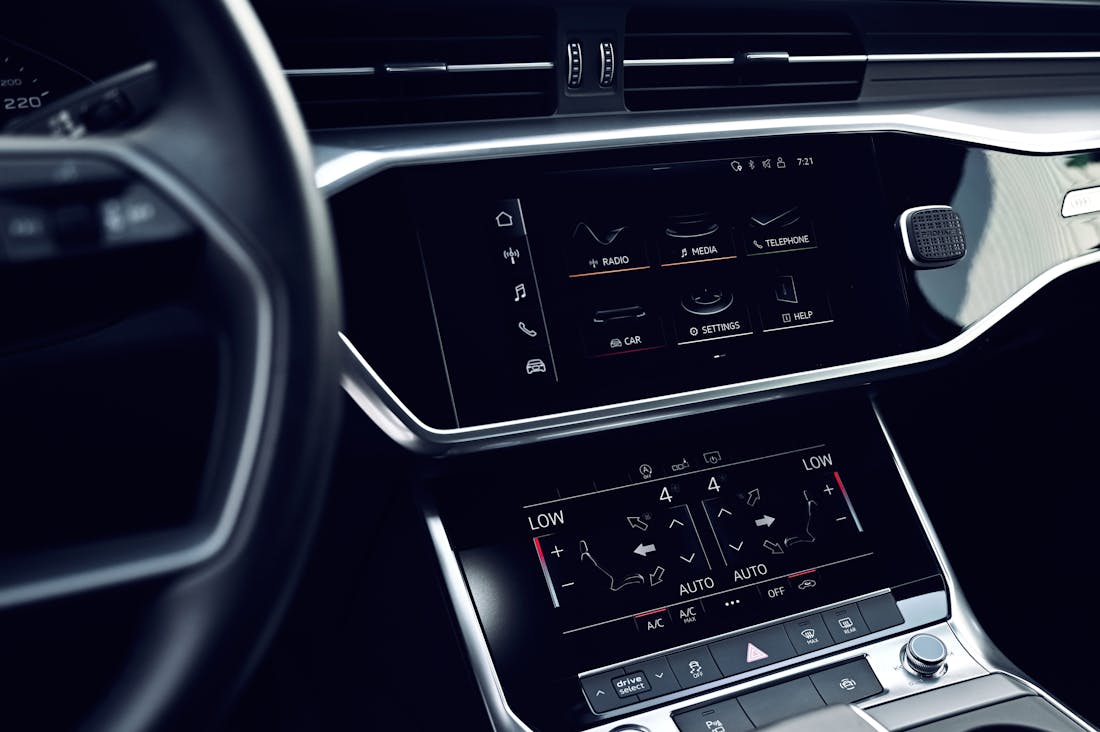The automotive industry is undergoing a transformative shift toward sustainability, driven by both technological advancements and changing consumer preferences. As we explore the future of automotive innovation, we unveil cutting-edge technologies that aim to reduce environmental impact, enhance efficiency, and promote alternative energy sources. This journey highlights key trends shaping tomorrow's vehicles and their role in creating a cleaner, greener planet. From electric vehicles to autonomous driving and smart mobility solutions, the path forward is poised to redefine how we perceive transportation in a rapidly evolving world. Join us as we delve into these exciting developments that promise to revolutionize the way we drive and live.

Electric Vehicles: The Shift Towards Sustainability
Electric vehicles (EVs) represent a pivotal shift towards sustainability, addressing the pressing challenges of climate change and air pollution. As the automotive industry evolves, EV technology has advanced significantly, boasting longer ranges, faster charging times, and improved battery efficiency. This transition is fueled by growing consumer awareness of environmental issues and government incentives aimed at reducing greenhouse gas emissions. Transitioning from traditional fossil fuel-powered vehicles to electric alternatives not only lowers carbon footprints but also enhances energy independence. Moreover, the integration of renewable energy sources into the charging infrastructure further amplifies the positive impact of EVs, setting the stage for a cleaner, greener future.

Smart Features That Enhance Driving Experience
Modern vehicles are increasingly equipped with smart features that significantly enhance the driving experience, combining convenience, safety, and entertainment. Advanced driver-assistance systems (ADAS) such as adaptive cruise control and lane-keeping assist help maintain safe distances and ensure proper lane positioning, reducing driver fatigue during long trips. Infotainment systems with smartphone integration enable seamless access to navigation, music, and communication apps, allowing drivers to stay connected without distraction. Additionally, features like automatic emergency braking and blind-spot monitoring enhance safety by providing real-time alerts about potential hazards. Overall, these smart technologies transform driving into a more enjoyable and secure experience, catering to the needs of today’s drivers.

The Role of AI in Automotive Development
Artificial Intelligence (AI) plays a transformative role in automotive development by enhancing design, manufacturing, safety, and user experience. It streamlines the engineering process through predictive analytics, optimizing vehicle design using simulations and analyzing vast data sets for improved efficiency. In manufacturing, AI-driven robots increase precision and reduce production costs, while machine learning algorithms help in predictive maintenance, minimizing downtime. Safety features are significantly improved by AI, with systems like advanced driver-assistance systems (ADAS) utilizing real-time data to enhance collision avoidance and traffic management. Additionally, AI personalizes the user experience, allowing for voice-activated controls and data-driven insights, ultimately creating smarter, safer vehicles.
The Rise of Hydrogen Fuel Cell Technology in Vehicles
Hydrogen fuel cell technology is gaining traction as a viable alternative to conventional battery electric vehicles. This innovative approach utilizes hydrogen gas to produce electricity, emitting only water vapor as a byproduct, which makes it an environmentally friendly option. Several automotive manufacturers are investing in hydrogen fuel cell development, aiming to create vehicles with longer ranges and faster refueling times. The potential for hydrogen to power heavier vehicles, such as trucks and buses, is particularly promising, as it addresses range anxiety often associated with electric vehicles. As infrastructure for hydrogen refueling expands, we may witness a significant shift towards these clean energy vehicles on our roads.
Impact of Smart Mobility Solutions on Urban Transportation
Smart mobility solutions are revolutionizing urban transportation by integrating technology with public transit. These solutions include ride-sharing platforms, autonomous shuttles, and connected infrastructure that optimize traffic flow. By leveraging real-time data, cities can create more efficient public transport systems, reducing congestion and improving accessibility. For instance, mobile applications can provide commuters with real-time information about transit schedules and availability. Furthermore, the collaboration between traditional public transport and new mobility services fosters a multi-modal approach, enabling seamless transitions between different modes of transportation, which enhances overall urban mobility experiences.
Sustainable Materials: Revolutionizing Vehicle Production
The automotive industry is increasingly turning to sustainable materials to reduce its environmental footprint during vehicle production. Innovations in materials science are leading to the development of biodegradable plastics, recycled metals, and renewable composites that can replace traditional materials. By utilizing these sustainable alternatives, manufacturers can minimize the carbon emissions associated with extraction and production processes. Furthermore, the use of such materials not only aligns with environmental goals but also appeals to eco-conscious consumers. As the demand for greener products rises, automotive firms are likely to invest more in research to enhance the performance and durability of these sustainable materials, paving the way for a more responsible approach to manufacturing.
The Future of Autonomous Vehicles and Their Societal Impact
The advent of autonomous vehicles (AVs) promises to redefine transportation, with far-reaching implications for society. AVs can enhance road safety by reducing human error, which accounts for a significant percentage of traffic accidents. This technology also holds the potential to reshape urban planning, as the need for extensive parking spaces may diminish, allowing cities to repurpose these areas into green spaces or commercial developments. Moreover, AVs can improve mobility for individuals unable to drive, such as the elderly or disabled, promoting inclusivity. However, the widespread adoption of autonomous vehicles will necessitate updates to regulatory frameworks and infrastructure, ensuring safety and efficiency as we navigate this transformative era in transportation.
AI-Assisted Content Disclaimer
This article was created with AI assistance and reviewed by a human for accuracy and clarity.